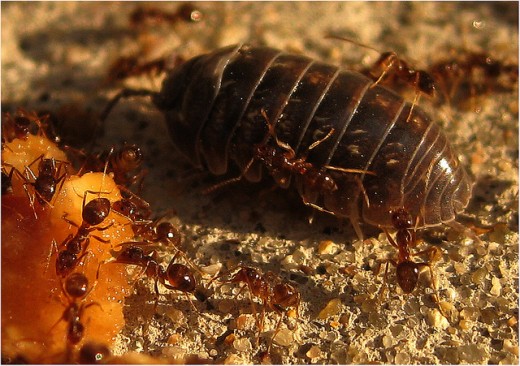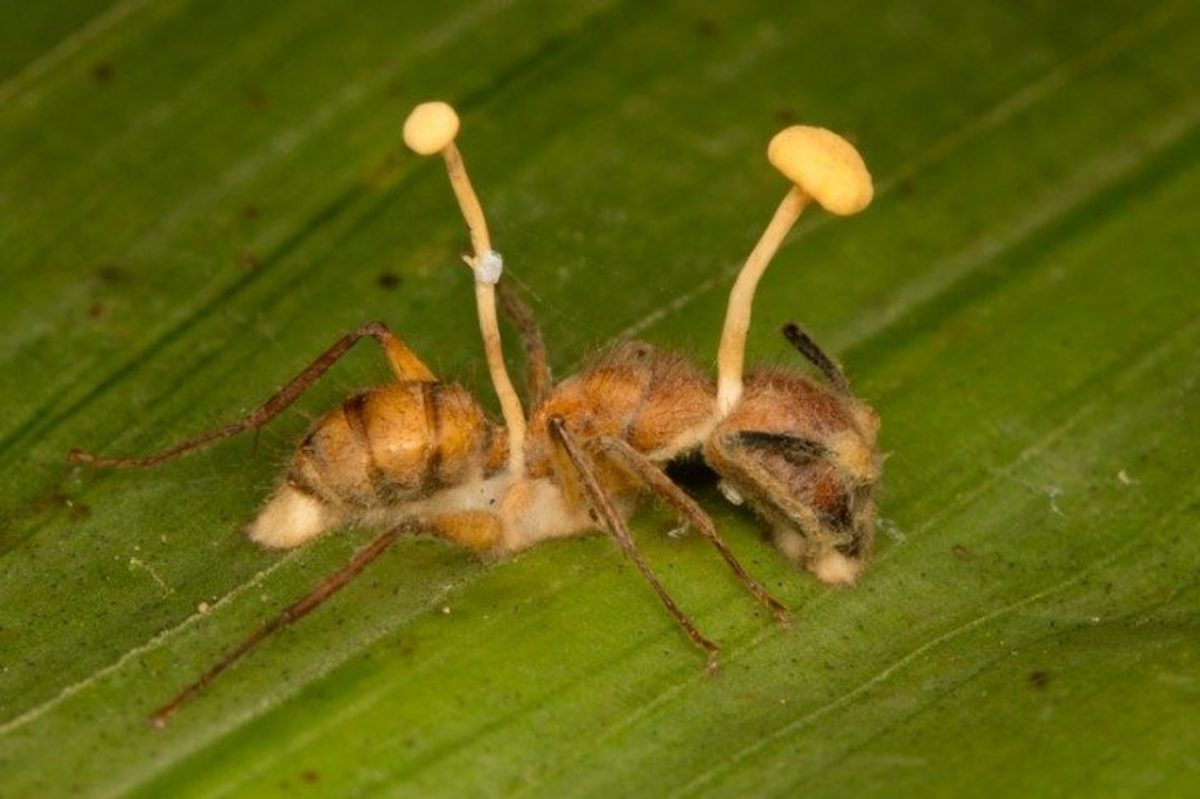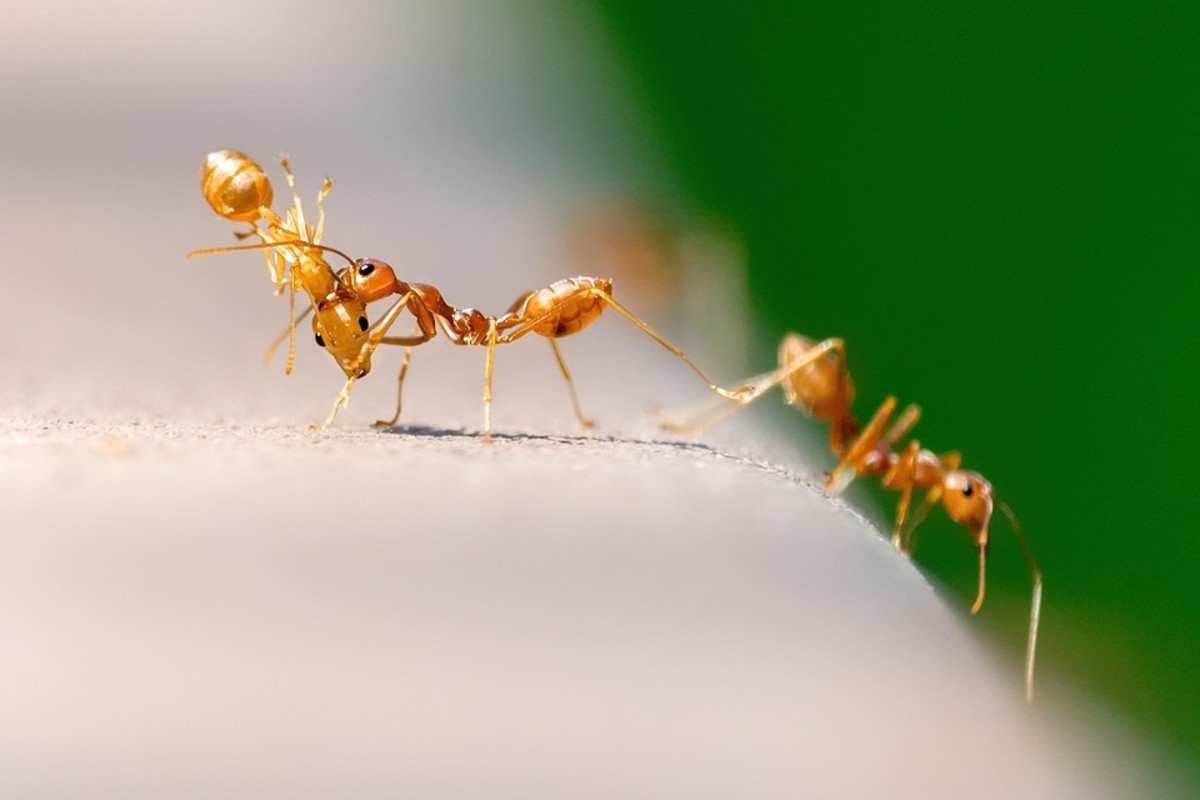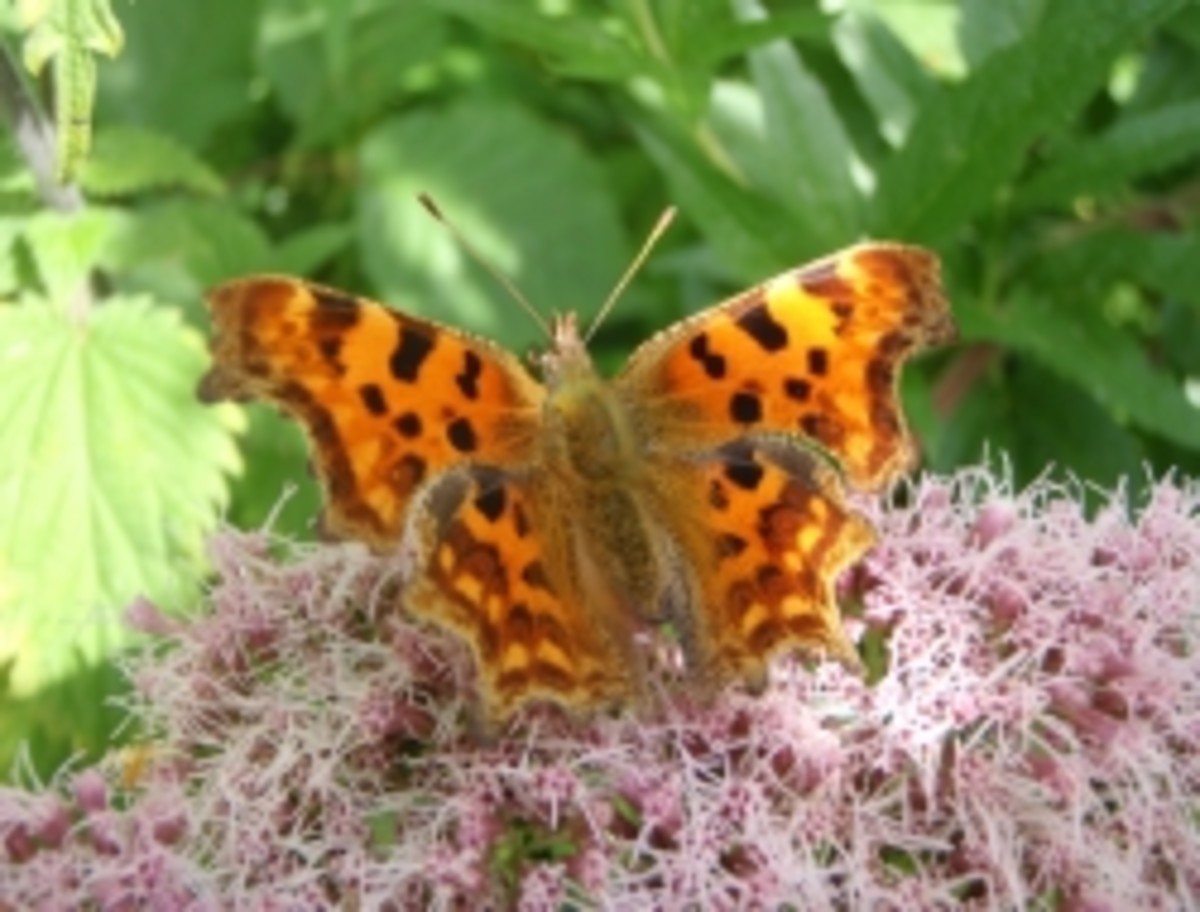- HubPages»
- Education and Science»
- Life Sciences»
- Entomology»
- Insects & Bugs
Crazy Ants -- Furry Ants That Bite Invade Texas
Crazy Ants Invade Texas and all Gulf States 2013 Update
January 24, 2013 Update:
Researchers have identified the invasive furry ant called the Rasberry Crazy Ant after the exterminator who discovered them. The joint effort by researchers from the Smithsonian Institution and Maryland's Towson University resulted in identifying the species as Nylanderia fulva (Mayr). They published their results in the peer-reviewed journal PLOS ONE.
The positive identification is a step toward controlling the pest. The infestation may now affect every Gulf Coast state, the researchers report. The exact species of the ant has been debated since it was first discovered in Harris County,Texas more than 10 years ago. The team used multiple approaches to arrive at the identification of the ants.They believe N. fulva is probably from southern South America.
You've seen the movie trailers of ants swarming over everything in their path, eating, destroying and leaving human beings screaming and powerless to stop their rampage. Meet the crazy ant. Also known as furry ants, Caribbean ants, hairy crazy ants and the Rasberry Crazy Ants.
Although the actual mental health of these ants remains unknown, they get their colorful name from their erratic movement patterns: they scatter like crazy when disturbed. Unlike more common ants known in the U.S. they don't march in orderly lines. Instead they spread in haphazard patterns.
This invasive creature has the power to cause widespread harm in agriculture, homes -- and particularly to electrical systems. Oh, and they bite.
The spread of the crazy ant to Louisiana, and specifically to New Orleans, came in September, 2011, confirmed by the Louisiana State University AgCenter. The ants have been at home in Florida since the 50s and began to spread in 2000, The Gambit reported.
In December 2011, the Texas and Southwestern Cattle Raisers Association website confirmed that the crazy ant invasion has spread to Travis County.
Using caulking and weather stripping might help to prevent the crazy ants from coming indoors, or infesting the interior of RVs if you travel through crazy ant infested Southern states. This may be your best defense, because these pests nest outdoors and range widely to forage for food.
In Texas, the EPA and the Texas Department of Agriculture have granted temporary approval for certain pest control products only for use in areas with confirmed rasberry crazy ant infestations. The temporary exemption expires in October 2012, according to the Texas A&M University Rasberry Crazy Ant web page. These products are only available to pest control companies, not to consumers.
Crazy Rasberry Ants in Texas

The Furry Ant Infestation Begins -- and Spreads
A pest control operator reported the ants in 2002 in Pasadena, Texas, according to Texas A&M University. Five counties in Florida had crazy ants in 2000 -- now crazy ants infest 20 Florida counties. These pests are also called Caribbean crazy ants and may come from South America. Other common names for these pests include furry ants and furry crazy ants. Throughout Texas, pest control operators and the public are reporting new infestations as the ants spread to a greater number of counties.
The ants are also on the move in Mississippi and Louisiana. References to Mississippi furry ants refer to the same devastating, eat-everything ant pest that invaded Texas. The furry crazy ants infest garbage cans, tree stumps, rotting wood, potted plants and other sources of nutrition and moisture such as outbuildings and even camper shells.They're omnivorous, consuming plant material and creatures for food.
How to Identify a Crazy Ant
The ants are about an eighth of an inch long, brownish-red and get the "hairy" part of one of their common names from the furry appearance of their stomachs. Because common ants don't have furry stomachs, their bodies appear shiny. The dull look of furry crazy ants can help you identify them.
Crazy ants generally nest outdoors and they seek food under common objects, especially anything that retains moisture, Texas A&M University reports. The ants live in polygyne colonies -- meaning they can have multiple queens. A crazy hairy ant colony can number in the thousands. The ants also group into supercolonies of thousands to millions of crazy ants, according to Jason Myers, who has been researching the crazy ants at Texas A&M University.
Because they like to live in moist areas, such as under logs or boards, their nests are more difficult to spot. You won't see any anthills if crazy ants move into your yard.
Electrical Damage
There's a method to their madness. It seems these ants like to be warm. They swarm into air conditioning, pool pump units, computers and lift equipment, Meyers reports. The massive ant infestations can cause substantial damage, resulting in shorts and equipment outages. Meyers noted these conditions in Houston, Texas.
Shorts caused by ant infestation can have a lasting impact -- slowing agricultural production, increasing costs, impairing safety and causing complete system shut-downs when sensitive equipment becomes impaired.
A furry ant colony can have multiple queens

Crazy Ants Refuse to Leave
Pest Control? These invaders are too tough for that -- so far.
The furry ants tend to return quickly following attempts to kill them -- continuing the impression that this is something out of a horror film. It almost seems they return with a vengeance. Like other invasive species of creatures that come into an area, crazy ants may crowd out harmless ant species. Crazy ants don't go for ant baits -- or they're just too smart to fall for that.
Even when exterminators kill multitudes of crazy ants with methods unavailable to consumers, the invaders return in force.
As with other pests, your best offense may be a good defense. Don't keep wood piles, deadwood, debris, garbage cans, compost, mulch piles or trash of any kind near your house. These creatures infest moist areas that have plenty of food. Clean up the yard and don't leave food out indoors or in outbuildings.
More Ant News About Texas
Fire ants are a separate species from the furry, crazy ants. They, too, invaded Texas. The battle has been going on for 70 years, and it seems there's finally some hope of defeating the fire ants.
Despite the headlines that sound like bad Horror films, the devastation wrought by invasive ants is real. They affect the ecology and the wallet of the places they attack. Agriculture, animals, homes and businesses experience their harmful effects.
One of the balances of nature, when humans aren't screwing things up, is the existence of natural predators. It looks like at last Texans are getting the upper hand on the red fire ants.
Fire Ants in Texas -- Texans fight back with ant-loving flies. Check out the National Geographic report:
Updated January 24, 2013
Protected by Copyscape. Do Not Copy.
October 2011 Crazy Ant Update
Texas homeowners spend hundreds to thousands of dollars a year to control crazy ant infestations, the October 2 issue of the "Eagle-Tribune" (MA) reports. These ants are smaller than fire ants, about the size of fleas, and look dull instead of shiny because of their hair. Although they are forcing out fire ants, that's small consolation to local residents. Unlike fire ants, crazy ants nest in moist areas, such as under lumber, instead of in hills, making them difficult to avoid. They move extremely fast and in random patterns, making more common ants look like lines of slow-marching soldiers by comparison.
The nickname "rasberry ant" isn't a misspelling -- they're named after Texas exterminator Tom Rasberry who discovered the first crazy ants in Texas in 2002, according to the AP story in the Eagle-Tribune. They've spread to 18 Texas counties and 20 in Florida. Hay bales hauled as feed due to the drought in Texas help crazy ants spread.
The drought worsens hairy crazy ant conditions in southeast Texas, KTRK-TV in Houston reported on October 4th. The crazy ants are thirsty and get into air conditioners and are spreading...like crazy. The report summed up the hairy crazy ant problem: "The ants nest inside and outside and eat everything." No household chemicals stop crazy ants, the station advises. Calling in professional pest control is the only recourse. The two pesticides effective against crazy ants require multiple applications and are available only to professionals.
Your best recourse is to control conditions that attract crazy ants, such as dead wood, garbage and outdoor food and water sources -- and if they arrive on your property, call for professional help.
References:
The AP story in the Eagle-Tribune:Hairy, Crazy Ants Invade From Texas to Miss.
KTRK-TV Houston, TX: Drought Worsening Southeast Texas' Problems with Crazy Ants
Abc new video about the impact of the drought on the crazy ant infestation in Texas, including interviews with local business people on pest control issues for getting rid of crazy ants.
Furry Ants in Louisiana
WAFB Channel 9 news reported on rasberry ants invading South Louisiana on August 13, 2012. They spread through Baton Rouge parish.
As with the Texas crazy ant invasion, these pests have caused businesses to lose money and present the risk of property damage because they get into electrical wiring.
The ants are persistent and at the time of the report no one was being able to get rid of the ant infestations.
Furry Ant Pictures
- Pest Ants | Landscape IPM
Clear photograph of the crazy ant, aka the rasberry crazy ant, furry crazy ant and hairy crazy ant. This invasive ant appears next to common ant species to help you identify it.








